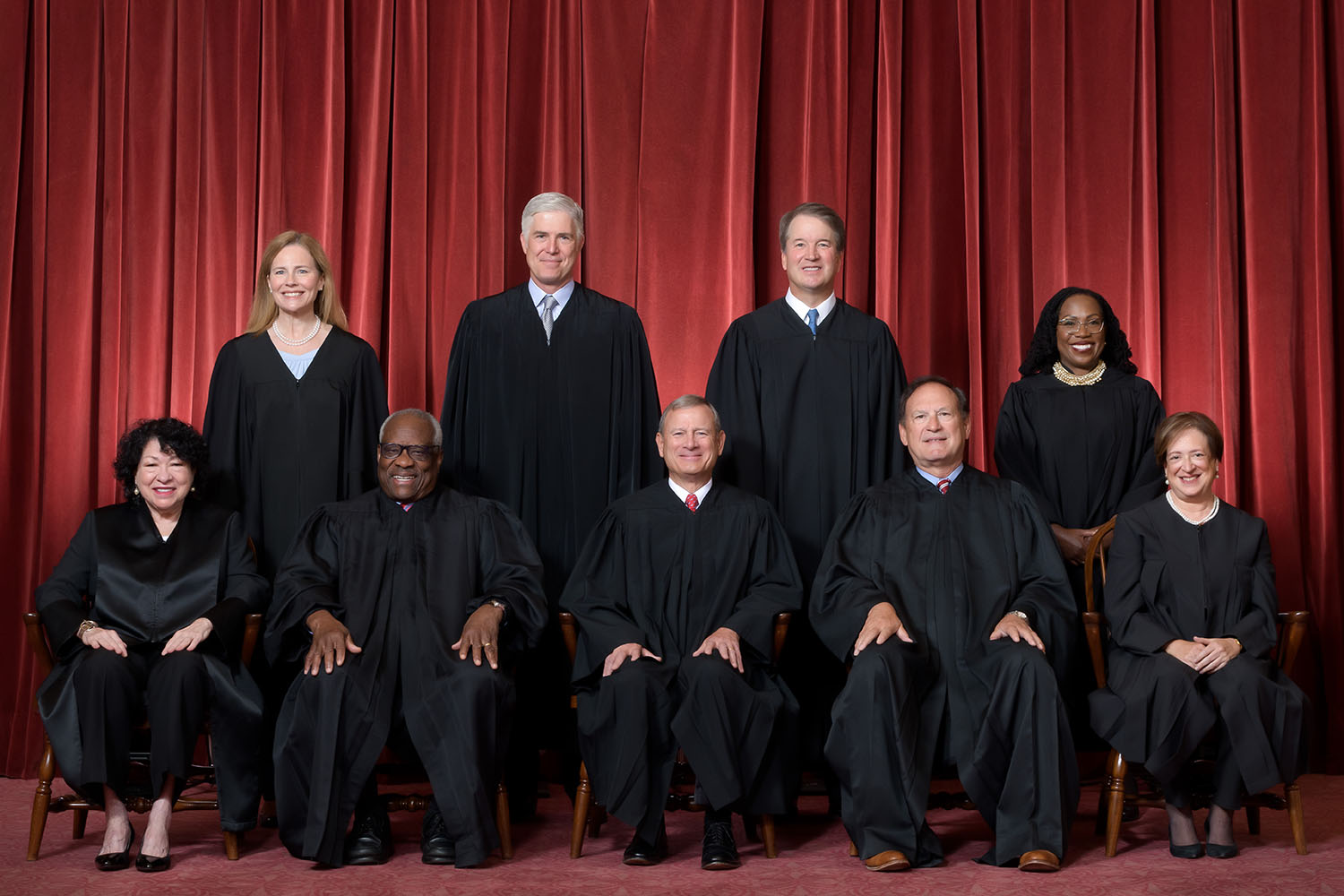Yesterday, the Supreme Court heard oral arguments in this case.
It is difficult to actually conceive of how long the battle for our Second Amendment rights has been going on. It started in 1792 and has continued through tomorrow.
In the founding era, there were a number of racist and religious exceptions. These were designed to keep arms out of the hands of Negros, mixed race people, Indians, certain religions, and other deplorable. By the 1870s, all of these exceptions were found to be unconstitutional, leaving very few infringements that would survive constitutional muster.
At this time, temporarily denying the right to people that have been adjudicated violent in a court of law is the only one I know of. See: —Opinion, United States v. Rahimi, 602 S.Ct. ____ (U.S. 2024)
In the early 1900s, New York City decided to ignore the Constitution and passed the Sullivan Act. The Sullivan Act was designed to disarm those that would stand up to the corrupt bosses who controlled the city. They used a permitting system.
They claimed that this was constitutional because some people did get permits and everybody could beg for permission from the government for that permission slip. This continued until 2022, with the Bruen decision, the corrupt NYC permitting scheme was shutdown. For all of 10 seconds.
The Bruen response bill attempted to create a statewide “sensitive” places replacement.
After the Sullivan Act, the infringers decided to ban handguns, machine guns, and short shotguns. They did this by placing a tax on these guns that was so outrageous that The People could no longer afford them.
They did not accomplish this. What they got instead was a functional ban on Short Barreled Rifles, Short Barreled Shotguns, Machine guns, and Silencers. By 1936, this was the accepted law of the land.
Using a saying that had not yet been published, in the late 1960s the infringers took advantage of a crisis to stop mail order gun sales. The GCA of 1968 created FFLs and required in person sales of firearms.
The claim was that those FFLs wouldn’t sell to bad people.
When bad things kept happening, they tried more gun control. Mostly permitting schemes that made it nearly impossible for The People to get permission.
Using another crisis, they got the Brady Act passed. Thank goodness, the NRA was fighting for some level of a win. The original intention was to create a system where buyers would have to get permission from the government for any gun purchase.
This was in the form of a “background check” with no limit on how long it took or how intrusive it might be. The NRA got the NICS system for us. Along with a “not denied is proceed”. It put the onus on the government to complete the check rapidly.
In 1986, we got a win with a poison pill. This was the Firearms Owner Protection Act. This was designed to protect firearm owners from being persecuted by the ATF.
There was a time when describing the internal workings of a machine gun was being construed by the ATF as manufacturing a machine gun. Selling a gun or two could get you sent to prison for not having an FFL. It was bad. There are stories of ATF agents hanging around gun shows seeking people to arrest or FFLs to bust for trivial things.
The bad part of the Firearms Owner’s Protection Act was the Hughes Amendment. The infringers had realized that the NFA had outlived its usefulness.
In 1934, the $200 surcharge for transferring a machinegun was unreachable for most of The People. When a M3 machinegun was selling for under 30 dollars, $200 was nearly impossible. An ad for a Colt M16 shows a price of $236.00 plus $5.00 for shipping. By the mid-1980s, the price was around $1800.
At $1800, a $200 surcharge wasn’t as bad.
One of the problems that started happening after 1986, when the NFA was closed to new machineguns, was a price boost of $200 every time a NFA item changed hands.
Consider buying a silencer today. The can costs $500 + $200. If you want to sell the can, you would like to get $700, to recover your costs. Now, this doesn’t work. Given the choice of a used can for $700 + $200 tax or a new can for $500 + $200 tax, you buy new. Thus keeping the costs of silencer’s down.
After 1986, there were no new machineguns. This means that every transfer increases the cost of that gun by at least $200.
At this point, the infringers moved to stop the sale of all firearms. The method they decided on was to sue firearm retailers and manufacturers out of business.
What they did was they found a bloody victim and then sued the FFL that sold the gun. They knew they would not win the case, but the cost of litigation was punishment enough.
In 2005, bipartisan legislation was passed to stop this lawfare. The Protection of Lawful Commerce in Arms Act (PLCAA) was designed to protect entities in the lawful commerce in arms from frivolous lawsuits.
And it worked.
Until Sandy Hook.
They sued Remington Arms because they owned Bushmaster who manufactured the rifle that the asshole used to murder children and teachers.
What they claimed was that Bushmaster produced ads that caused the asshole to decide to murder his mother. Steal her keys to the safe. Open the safe. Steal the AR-15 within. To drive the car he stole from his mother to the school. And there murder children and teachers.
It was all the fault of the manly man ads that Bushmaster used to sell guns.
The lower state court dismissed the case based on the PLCAA. It was appealed up to the Connecticut Supreme Court. They decided the case could move forward. That was appealed to the Supreme Court, who denied cert.
Remington was bleeding money, and this case didn’t help. They went bankrupt. The hull of the company had no assets and no people. The insurance companies were on the hook for the money involved in the suit.
They settled. No gun people were involved in that disaster. It was a purely money motivated decision.
Which brings us to this case. Sorry for this long history.
Mexico was approached by the usual suspects. They filed in Massachusetts claiming that all the gun manufacturers were causing horrible things in Mexico.
The argument goes something like this:
The Cartels get guns from an illegal gun dealer. That illegal gun dealer purchased that gun from an illegal gun smuggler. The illegal gun smuggler purchased the gun from a straw purchaser. The straw committed felonies when they filled out the 4473 and when they sold the gun. The FFL knows that some of the guns he sells are being sold to straw purchasers. The distributor knows that the retailer knows that he is selling some guns to straw purchasers. The manufacturer knows that they are selling to distributors that know that the FFL is selling some guns to straw purchasers.
Therefore, the gun manufacture is guilty of adding and abetting murder in Mexico.
Yeah, it is that bad.
The lawyer for the petitioners (good guys) gave his opening statement explaining this. He then stated that the path between crime and manufacture had too many intermediate steps to make them responsible. This is known as “proximate cause analysis”.
He didn’t say anything about PLCAA.
Thomas started the questioning. The conservatives asked the right types of questions.
Then Sotomayor stepped up to the plate. And asked good questions. Not great, but good.
After Gorsuch and Barrette, Kagan asked questions. Again, not great, but good.
Then the surprise of the day.
Jackson started asking questions. And her leading question was, “Why wasn’t this stopped by PLCAA?”
It was a Good question.
I’m looking forward to reading the court’s opinion. At this point, I am finding myself thinking that this maybe a 9-0 opinion.
Transcript of oral arguments in 23-1141



